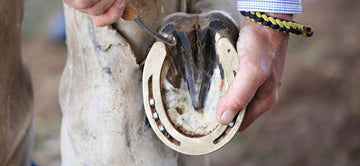Keeping your dog healthy means taking care of their skin, which can sometimes become prone to infections, irritation, or hot spots.
An antibacterial spray for dogs is an easy-to-use, effective solution that helps treat skin infections, reduce inflammation, and promote healing.
In this guide, we'll explore the benefits of antibacterial spray for dogs, what to look for in a good product, and how to use it properly to ensure your furry friend stays happy and healthy.
Understanding Antibacterial Spray for Dogs
Antibacterial dog spray and antifungal spray are medicated products designed to treat a range of skin conditions in dogs, including bacterial and fungal infections, hot spots, and general skin irritation.
These sprays are formulated to clean, disinfect, and soothe the skin, providing much-needed relief for your pet.
How Antibacterial Spray Works
Antibacterial sprays work by:
-
Relieving skin infections: They help fight bacteria and fungi that can cause infections like ringworm, seborrhoeic dermatitis, and other common skin conditions.
-
Soothing itchy skin: The cooling effect of the spray calms itching, helping to reduce scratching and irritation.
-
Reducing inflammation: Antibacterial sprays contain ingredients that reduce swelling and promote healing.
With its easy application, antibacterial spray is a go-to treatment for quick relief and recovery from skin issues.

Benefits of Using Antibacterial Spray
Using an antibacterial spray for dogs offers several key benefits that can help maintain their health and comfort.
Additionally, using an antifungal spray specifically formulated for pets can effectively treat fungal and bacterial skin infections, providing soothing benefits and convenience for pet owners.
Key Benefits
-
Relieves skin infections: The spray helps treat both fungal and bacterial skin infections, including conditions like ringworm and seborrhoeic dermatitis. It also helps relieve fungal infections, providing comprehensive care for your pet's skin issues.
-
Promotes healing: It helps speed up the healing process by creating an environment conducive to skin recovery.
-
Soothes itchy skin: Antibacterial spray provides relief for itchy, inflamed skin, reducing the need for your dog to scratch.
-
Convenient: This spray is easy to use, and its on-the-go application makes it ideal for busy pet owners.
-
Works well with other treatments: For maximum effectiveness, antibacterial spray can be used in conjunction with antifungal shampoos for dogs or other prescribed treatments.
Key Ingredients to Look for
When selecting an antibacterial spray for your dog, make sure the product contains effective ingredients that will provide the best results.
Essential Ingredients
-
Aloe Vera: Known for its soothing properties, aloe vera helps calm the skin, reduce irritation, and promote healing by reducing redness and inflammation.
-
Chlorhexidine Gluconate: A potent antiseptic that effectively cleans the skin and reduces bacterial growth, helping to treat infections and prevent them from spreading.
-
Ketoconazole: This antifungal ingredient is especially useful for treating skin infections like ringworm and seborrhoeic dermatitis in dogs.
These ingredients are not only effective at treating infections but also gentle enough to be used on your pet’s sensitive skin.

Choosing the Right Antibacterial Spray
Choosing the right antibacterial spray for your dog is essential for effective treatment and safety.
What to Look for
-
Veterinarian-formulated: Ensure the spray is specifically designed for dogs and has been developed with veterinarian oversight.
-
Contains soothing and antiseptic ingredients: Look for sprays that include ingredients like aloe vera and chlorhexidine gluconate, which are known to soothe and clean effectively.
-
Convenient spray bottle: Choose a spray that is easy to apply, especially for hard-to-reach areas. A well-designed bottle ensures a hassle-free application.
-
Effectiveness against pathogens: The spray should be effective against a wide range of bacteria and fungi, offering comprehensive protection and treatment. Consider using an antifungal spray that is veterinary approved and clinically tested for added assurance.
Common Bacterial Skin Infections in Dogs
Dogs often face various skin conditions that can benefit from the use of an antibacterial spray. Some of the most common issues include:
Common Skin Conditions
-
Bacterial skin infections: These infections can cause redness, swelling, and discharge, often due to cuts, scratches, or allergies.
-
Fungal skin infections: These include ringworm and seborrhoeic dermatitis, which can cause itching, hair loss, and skin lesions.
-
Hot spots: These are moist, infected areas of skin that can cause pain and discomfort, often resulting from excessive licking or scratching.
-
Skin irritation: Allergies, environmental factors, or parasites can cause general skin irritation, leading to itching, redness, and discomfort.

Tips for Preventing Skin Infections in Dogs
Preventative Measures
Preventing skin infections in dogs requires a combination of good hygiene, regular grooming, and a healthy lifestyle. Here are some tips to help you keep your dog’s skin healthy and prevent skin infections:
-
Regular Grooming: Regular grooming helps to remove dirt, debris, and allergens that can cause skin irritation and infections. Brush your dog regularly, paying special attention to areas prone to skin issues, such as the ears, paws, and belly.
-
Keep Your Dog Clean: Bathe your dog regularly using a mild dog shampoo that is suitable for their skin type. Avoid over-bathing, as this can strip the skin of its natural oils and lead to dryness and irritation.
-
Dry Your Dog Thoroughly: After bathing or swimming, make sure to dry your dog thoroughly, paying extra attention to areas prone to moisture, such as the ears and paws.
-
Trim Excess Hair: Excess hair can trap moisture and create an ideal environment for bacterial and fungal growth. Trim your dog’s hair regularly, especially around the ears, paws, and anus.
-
Use an Antifungal Medicated Spray: Using an antifungal medicated spray can help to prevent fungal skin infections and promote healing. Ingredients like aloe vera are particularly soothing and effective.
-
Avoid Harsh Chemicals: Avoid using harsh chemicals or soaps on your dog’s skin, as these can strip the skin of its natural oils and lead to dryness and irritation.
-
Provide a Healthy Diet: A healthy diet rich in omega-3 fatty acids, vitamins, and minerals can help to promote healthy skin and prevent skin issues.
-
Keep Your Dog’s Environment Clean: Keep your dog’s environment clean and free of allergens and irritants. Regularly clean your dog’s bedding, toys, and food and water bowls.
-
Monitor Your Dog’s Skin: Regularly monitor your dog’s skin for signs of skin infections, such as redness, swelling, and discharge. If you notice any of these signs, consult with your veterinarian.
-
Use an Antibacterial Spray: Using an antibacterial spray can help to prevent bacterial skin infections and promote wound healing.
By following these tips, you can help to prevent skin infections in your dog and promote healthy, happy skin.
How to Use Antibacterial Spray
Proper application of antibacterial spray is essential for ensuring your dog’s skin heals effectively and safely.
Step-by-Step Application
-
Clean the Area: Ensure the affected area is clean and dry before applying the spray.
-
Spray on Affected Areas: Hold the spray bottle about 6 inches away from the affected area. Spray directly on the skin and avoid contact with the eyes and mouth.
-
Massage In: Gently massage the liquid into the skin until absorbed, ensuring complete coverage of the affected area.
-
Wash Your Hands: After applying the spray, wash your hands thoroughly.
-
Frequency: Apply once a day or as directed by your veterinarian.
Safety Precautions
-
Always read the label and follow the instructions carefully.
-
Avoid contact with eyes and mouth.
-
If irritation persists or worsens, discontinue use and consult your veterinarian.
Frequently Asked Questions
Is antibacterial spray safe for my dog?
Yes, most antibacterial sprays for dogs are gentle, non-toxic, and safe for pets when used as directed. Always check the label to ensure it's veterinarian-formulated.
Can I use it on my cat?
No, antibacterial sprays for dogs are specifically formulated for canine use. Always use products designed for cats to ensure their safety.
How do I apply it?
Simply spray it on the affected area and gently massage it in to promote absorption.
Can I use antibacterial spray on my dog?
Yes, antibacterial sprays are safe for dogs, but always follow the application instructions and consult your veterinarian if you have concerns.
Can you use human antibiotic spray on dogs?
No, human antibiotic sprays are not formulated for pets and may contain ingredients harmful to dogs. Always use pet-specific products.
What is the best antibacterial for dogs?
The best antibacterial sprays contain ingredients like chlorhexidine gluconate, aloe vera, and ketoconazole, which effectively treat infections and soothe irritated skin.
What does antimicrobial spray do for dogs?
Antimicrobial sprays for dogs are designed to kill bacteria and fungi on the skin, helping to prevent infections, soothe irritation, and promote healing.
The Best Antibacterial Spray for Dogs Conclusion
Using an antibacterial spray for your dog is an easy, effective way to treat skin infections, soothe irritation, and prevent further complications.
By choosing the right product and using it properly, you can help your pet maintain healthy, happy skin.
Always consult your veterinarian if you have any concerns about your dog's skin health and the best treatment options for their needs.










